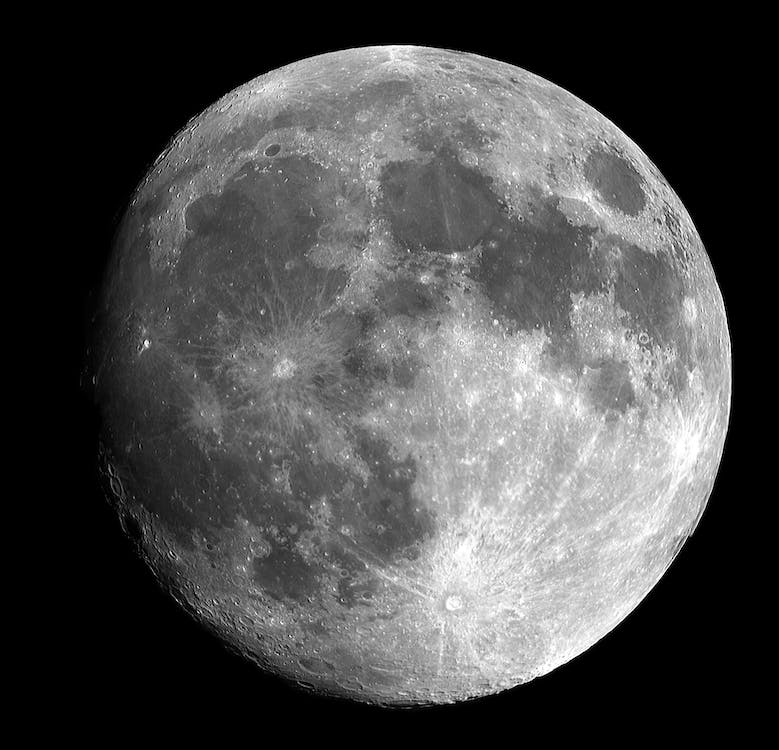Early researchers and observers of the Moon assumed that the large flat plains on the lunar surface were seas because they did not know that water was absent on the Moon’s dry, airless surface. They named them “maria,” the Latin for “seas,” singular “mare” pronounced as “mah-ray,” not knowing that a totally different process formed the mountains of the Moon.
The formation of mountains on Earth is different from that on the Moon. On Earth, mountain ranges form by tectonic movements or by volcanic eruptions. But the Moon neither has volcanoes nor tectonic plates. So, what causes the mountains to form? Looking back into the Moon’s history, there were gigantic asteroids in the Solar System, and the mountains were the impacts of those bodies. And when the asteroids hit the Moon and the planets, carters were formed with enormous size far more extensive than the ones we see today.
Here are the following longest mountain ranges on the Moon.
Montes Rook is a double ring-shaped mountain range lying along the Moon’s western limb, crossing over to the far side. The range is divided into the inner Rock and outer Rock with diameters of 480km and 620km, respectively. It entirely encircles the Mare Orientale and forms part of a massive impact basin feature. In turn, this range is enclosed by the larger Montes Cordillera, which is separated from the Montes Rook by a rugged, ring-shaped plain.
Montes Cordillera This mountain range lies across the southwestern limb of the Moon so that they are observed from the side of Earth. It forms the outer wall of peaks surrounding the Mare Orientale impact basin, the inner ring being formed by the Montes Rook. The range’s center is situated at selenographic coordinates 17.5° S, 81.6° W, and 574 km (357 mi) in diameter.
Montes Haemus mountain range forms Mare Serenitatis basin’s southwestern edge on the Moon. This basin formed when an asteroid 50 to 100 kilometers across slammed into the Moon 3.87 billion years ago. The mountains are 2 to 3 kilometers high but were about 5 kilometers high before lava flows flooded the basin.
They create a less prominent reflection of the Montes Apenninus range to the west and curve up to nearly join at the northern end. The eastern edge ends with the PromontoriumArcherusia, to the northwest of the crater Plinius. This end reaches a gap where the Mare Serenitatis to the north joins the Mare Tranquillitatis to the south.
19.9°N 9.2°E are the selenographic coordinates of this range and with 560km length. The tallest peaks reach about 2.4 km high.
Montes Caucasus. In the northeastern part of the Moon lies the is a rugged range of mountains of Montes Caucasus. At a level surface gap, the range joins the Mare Imbrium to the west with the Mare Serenitatis to the east. It then stretches in an irregular band to the north-northeast to the western side of the prominent crater Eudoxus. The range forms the Mare Serenitatis’s northwestern boundary and forms a continuation of the Montes Apenninus range to the southwest.
The range has several breaks where nearby lunar mare has intruded into the formation, especially near the southern tip. The crater Calippus is embedded within the eastern flank of the range. The remnants of the crater Alexander are along the east side to the south of Eudoxus.
Montes Jura. This mountain range in the northwest part of the Moon’s near side has 47.1° N 34.0° W selenographic coordinates. Its diameter is 422 km, and an elevation approximately 3800m above the level of Sinus Iridum. It got its name from the Jura Mountains in eastern France and western Switzerland.
Montes Appeninus
This mountain range was formed ~3.8 to 3.9 billion years ago when the basin of Mare Imbrium was excavated because of an impact by an asteroid-sized body. The crustal material uplifted and formed an arc-shaped mountain due to the effects or the massive body.
Mons Huygens, 5.5 km high, is in this mountain range. Mons Hadley Delta lies on the east end of the mountain range and near the region where NASA’s historic Apollo 15 mission landed.
The mountain range is a part of a distinct geological feature we see on the Moon called multi-ring impact basins.

